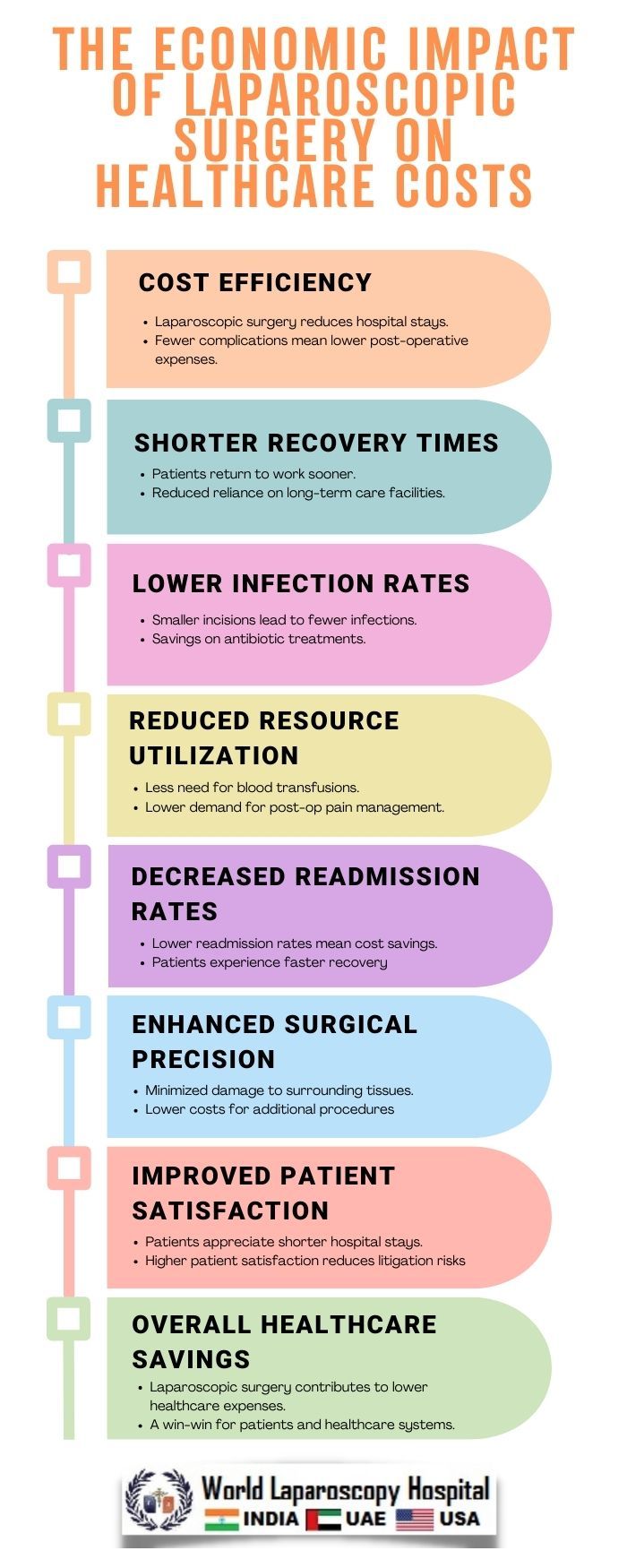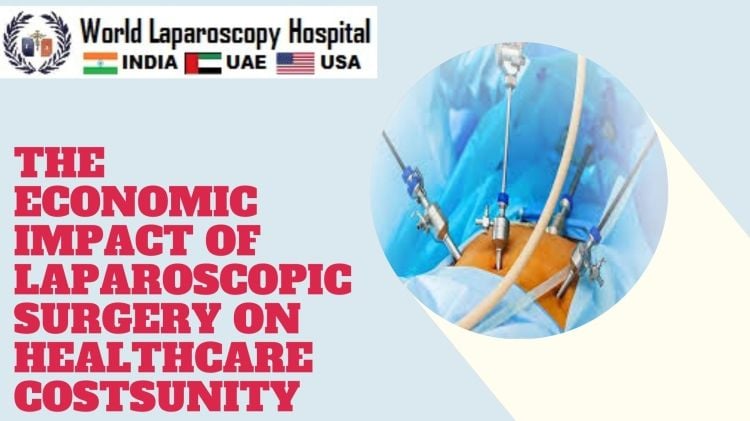Title: The Economic Impact of Laparoscopic Surgery on Healthcare Costs
Introduction
In recent decades, medical advancements have revolutionized the field of surgery. One of the most significant breakthroughs is laparoscopic surgery, which has not only improved patient outcomes but also had a substantial economic impact on healthcare costs. This article explores the various facets of laparoscopic surgery and how it has influenced healthcare economics, with a focus on its impact in Gurugram, India.

Understanding Laparoscopic Surgery
Laparoscopic surgery, also known as minimally invasive surgery or keyhole surgery, involves making small incisions in the patient's body and using specialized instruments to perform surgical procedures. Unlike traditional open surgery, which requires larger incisions, laparoscopy offers several advantages. Surgeons like you have embraced this technique because it provides better visualization, reduces trauma to surrounding tissues, and accelerates patient recovery.
Lower Hospitalization Costs
One of the primary economic benefits of laparoscopic surgery is its ability to reduce hospitalization costs significantly. Traditional open surgeries often necessitate longer hospital stays due to the larger incisions, increased pain, and extended recovery times. In contrast, laparoscopic procedures allow patients to recover more quickly, leading to shorter hospital stays. This reduced length of stay translates into substantial cost savings for both patients and healthcare providers.
Fewer Post-operative Complications
Laparoscopic surgery has a lower risk of post-operative complications compared to open surgery. Reduced trauma to the body and smaller incisions mean less risk of infection, less blood loss, and a lower chance of wound complications. Surgeons in Gurugram have observed that patients undergoing laparoscopic procedures often experience fewer post-operative complications, resulting in decreased healthcare costs associated with follow-up care, readmissions, and extended recovery periods.
Minimized Healthcare Resource Utilization
Another economic advantage of laparoscopic surgery is its efficient utilization of healthcare resources. With quicker recovery times and reduced post-operative complications, patients undergoing laparoscopic procedures typically require fewer healthcare resources such as nursing care, medications, and laboratory tests. This not only saves costs for healthcare providers but also reduces the overall burden on the healthcare system.
Outpatient and Same-Day Procedures
Laparoscopic surgery has also expanded the possibilities for outpatient and same-day procedures. Many routine surgeries that previously required an overnight hospital stay can now be performed as day surgeries. This shift in the healthcare landscape has resulted in substantial cost savings, as patients can return home on the same day, avoiding the expense of a hospital stay altogether.
Reduced Rehabilitation Costs
Traditional open surgeries often necessitate extensive post-operative rehabilitation, which can be both time-consuming and costly. In contrast, laparoscopic surgery allows patients to resume their daily activities more quickly, reducing the need for lengthy rehabilitation programs. For patients in Gurugram, this translates into lower healthcare costs associated with rehabilitation services and a faster return to work or regular daily life.
Improved Quality of Life
The economic impact of laparoscopic surgery extends beyond immediate cost savings. Patients who undergo laparoscopic procedures often experience an improved quality of life due to shorter recovery times, reduced pain, and faster return to normal activities. This improvement in the patient's overall well-being can lead to increased productivity and a more active workforce, contributing positively to the local economy in Gurugram.
Economic Impact in Gurugram
Gurugram, a rapidly growing city in India, has seen a significant impact of laparoscopic surgery on healthcare costs. As the city's healthcare infrastructure continues to develop, the adoption of minimally invasive techniques like laparoscopy has played a pivotal role in shaping healthcare economics in the region.
Accessibility and AffordabilityLaparoscopic surgery has made surgical procedures more accessible and affordable for the residents of Gurugram. The reduced cost of hospitalization, post-operative care, and shorter recovery times have made surgical treatments more affordable for a broader segment of the population. This affordability has contributed to an increase in the number of patients seeking surgical interventions, ultimately improving the overall health of the community.
Increased Surgical VolumeThe economic impact of laparoscopic surgery in Gurugram is also evident in the increased surgical volume. Hospitals and healthcare facilities in the city have witnessed a surge in laparoscopic procedures, as patients and physicians recognize the advantages it offers. This increased surgical volume has led to revenue growth for healthcare providers, which can be reinvested into improving healthcare infrastructure and services.
Medical TourismGurugram has become a hub for medical tourism, attracting patients from both within India and abroad. The reputation of Gurugram's healthcare sector, including its proficiency in laparoscopic surgery, has drawn patients seeking high-quality and cost-effective medical treatments. The revenue generated from medical tourism has further bolstered the city's economy.
Job CreationThe demand for laparoscopic surgery has created job opportunities for healthcare professionals in Gurugram. Surgeons, nurses, anesthesiologists, and support staff specializing in laparoscopic procedures are in high demand. This has not only provided employment opportunities but also stimulated economic growth in related sectors such as pharmaceuticals, medical equipment, and healthcare education.
Challenges and Considerations
While the economic impact of laparoscopic surgery on healthcare costs in Gurugram has been largely positive, there are challenges and considerations to keep in mind:
-
Initial Investment: Healthcare facilities must invest in specialized equipment and training for laparoscopic surgery, which can have a substantial upfront cost. However, the long-term economic benefits often outweigh these initial investments.
-
Training and Expertise: Ensuring that surgeons and healthcare staff are proficient in laparoscopic techniques is crucial for successful outcomes. Continued training and skill development are essential.
-
Patient Education: Patients need to be informed about the benefits of laparoscopic surgery and its potential cost savings. Education can help them make informed decisions about their healthcare.
-
Insurance Coverage: Adequate insurance coverage for laparoscopic procedures is necessary to ensure that patients can access these cost-effective treatments without financial barriers.
Conclusion
Laparoscopic surgery has had a profound and positive economic impact on healthcare costs in Gurugram. The combination of reduced hospitalization expenses, fewer post-operative complications, and improved patient outcomes has transformed the healthcare landscape in the city. As the adoption of laparoscopic techniques continues to grow, Gurugram is poised to become a leader in providing cost-effective and high-quality surgical care, benefiting both patients and the local economy. This innovative approach to surgery exemplifies how medical advancements can drive positive economic change in the healthcare sector.
